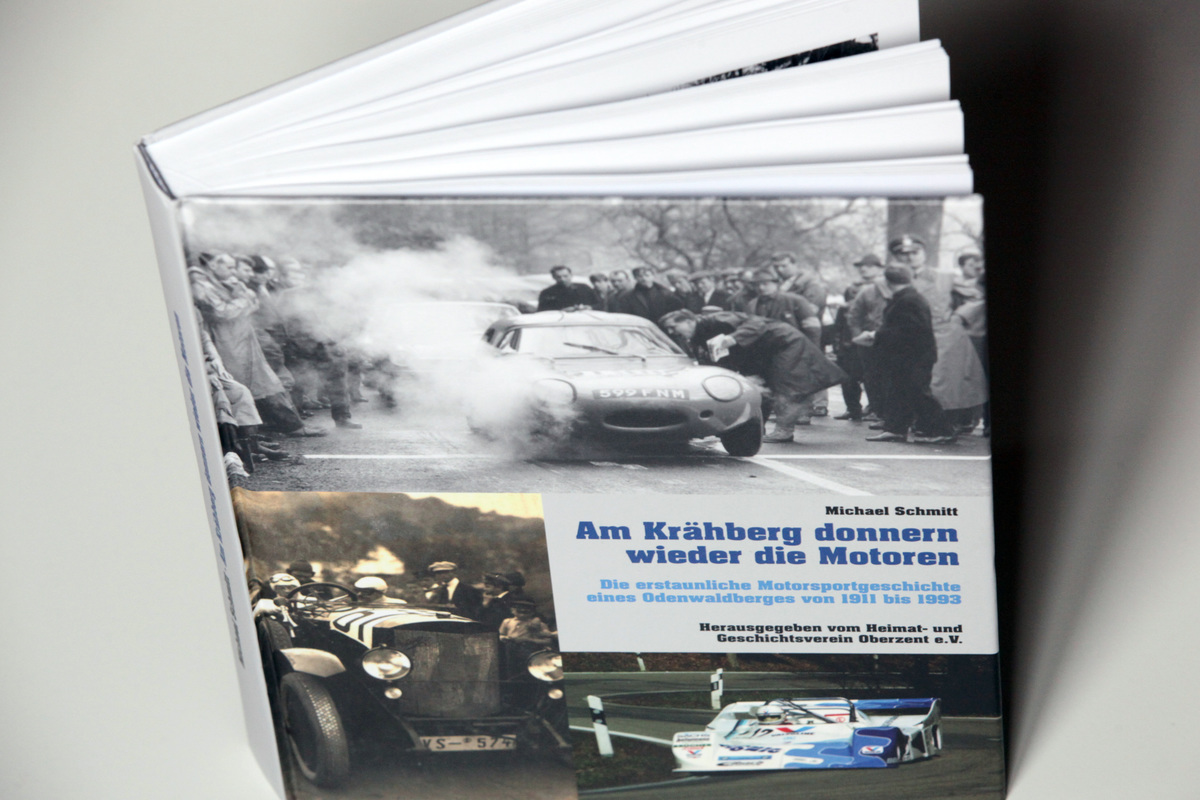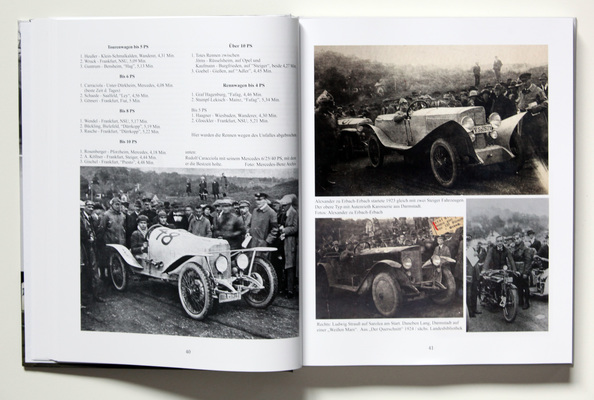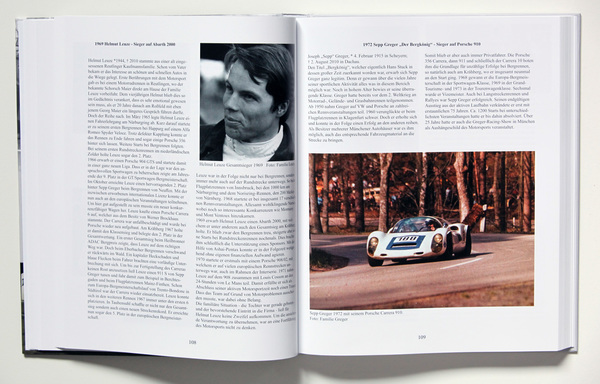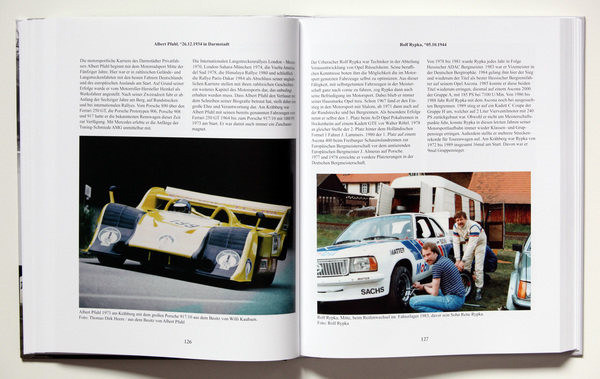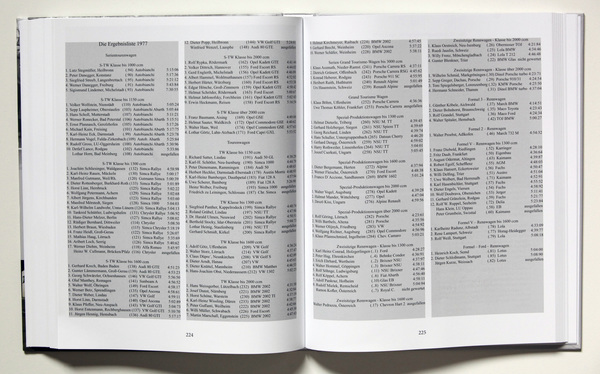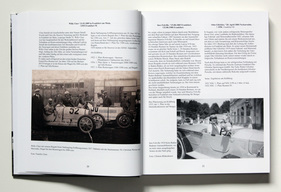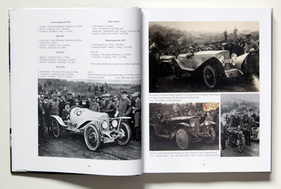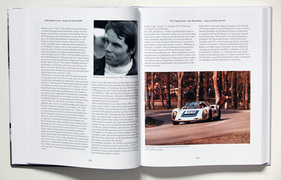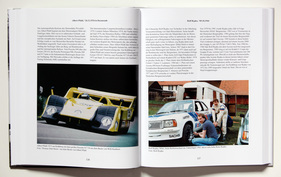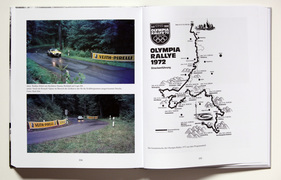There are few hill climbs that have such a long tradition as the competitive races on the Krähberg. The first events took place as early as 1911, while pre-war Krähberg races were held between 1921 and 1927. The old tradition was revived in 1964 and a second series of hill climb races took place for over 30 years until 1993. Nevertheless, the races in the Odenwald are less well known than, for example, the Klausenrennen or the Rossfeld hill climb.

A new book by Michael Schmitt fills this knowledge gap and does so in a convincing and, above all, comprehensive manner.
He has meticulously collected everything he could get his hands on and has now edited a work of over 350 pages. You can't thank him enough for this, because it shows enthusiasm and excitement beyond commercial thinking.
The early hill climbs
Rudolf Caracciola, Fritz von Opel, Huldreich Heusser and Ernes Merck were the stars of the pre-war era and they raced on FAFAG, HAG, Bugatti, Stoewer, NSU and Mercedes-Benz, among others. Schmitt devotes a short section to the drivers and the local vehicle manufacturers before describing the first six (1925 was postponed) Krähbergrennen in detail. Mention is also made of the German endurance test of 1923, which took the participants over the Krähberg on their long race.

In 1928, financial difficulties led to the abrupt end of the organizing HAC Darmstadt and with it the Krähbergrennen.
The late hill climb races
It would be 1964 before the engines roared again on the Krähberg. Unlike in the pre-war period, however, the opposite side of the mountain was used for the track. With a length of 3.6 kilometers and a maximum gradient of six percent, it offered some tricky bends that would subsequently make life difficult for many a racing driver.
Average speeds increased continuously. In 1964, 92.1 km/h was enough to set the track record, but by 1986, 131.52 km/h was needed to enter the all-time best list.

Schmitt also presents a number of outstanding racing drivers from the post-war period (1964 to 1993), including Rolf Stommelen, Kurt Ahrens, Sepp Greger and Reinhold Joest, as well as Albert Pfuhl, who drove a Ferrari 250 GT SWB and a Porsche 917/10 on the Krähberg.
The fact that the Krähbergrennen was held again in 1964 was partly thanks to the Veith Pirelli company, which wanted to prove itself in motorsport and supported the event financially and professionally.
In 1965, the race was already part of the German Hill Climb Championship. From then on, the approximately 15,000 spectators were able to see almost everything the automotive industry had to offer in the way of fast cars, from the Porsche 356 Carrera to the 904 GTS, the 906, the 910 and the 917, from the Ferrari 250 GT SWB to the Shelby Cobra, from the Lotus 23 to the Ford GT40.
Some races even took place in almost wintry conditions, but this was not the reason why 1993 was the last time the race was held. The end came rather unexpectedly, the hill climb was sacrificed to environmental protection, so to speak, without ever proving that the environment would have been better off afterwards ...
The Krähberg as a special stage
The Krähberg was not only the venue for the hill climb, but was also part of the route of many other events in the post-war period, as had already been the case with the endurance test in 1923.

The most famous of these was probably the 1972 Olympia Rally, one of the most spectacular rallies ever held on German soil. In addition to internationally renowned rally stars such as Darniche, Mikkola and Nicolas, the young Walter Röhrl also took part, setting eleven fastest times in a Ford Capri RS 2600 and giving the Alpine-Renault A110 and Ford Escort RS 1600 a run for their money. Special stage 30 led over the Krähberg, with the fastest driver (Darniche) completing the course in 4:51.3 minutes.
Diverse photo material
440 photos are spread over more than 350 pages, showing not only the races of the post-war period, but also the pre-war period, and many of the pictures have probably never been printed before. They are an impressive documentation of a piece of German motorsport history and anyone who owns a Porsche 906 or an Alpine today may even find their own car depicted.

Of course, Schmitt's book is not intended for the coffee table; it needs to be read and studied. But the pictures illustrate the constantly changing times at hillclimbs in an impressive way.
Extensive collection of data
Of course, the author has not merely commented on the races of the past. Wherever possible, extensive results lists are published, start lists integrated and reports from the past reproduced.

The result is a collection of data that will make many a historian jump for joy.
Reasonably priced
At EUR 29.00, this extensive collection of data and images is offered at a really reasonable price. For those interested, the book offers many anecdotes and pictures that have never been read or seen before. For example, the story of how a television reporter leaned on the open throttle cable while filming a Porsche Carrera 6 in 1966, which accelerated the car and ultimately led to a crash with two casualties.

Bibliographical information
- Title: The engines are roaring again on the Krähberg
- Author: Michael Schmitt
- Language: German
- Publisher: Heimats- und Geschichtsverein Oberzent e.V.
- Edition: 1st edition 2017
- Format: Hardcover, 21 x 26 cm
- Size: 352 pages, 440 color and black and white photos
- Price: EUR 29.00 (plus shipping EUR 2.50) in Germany
- Buy/order: By email from the author, from the Heimat- und Geschichtsverein Oberzent e.V. Beerfelden or from regional bookshops
